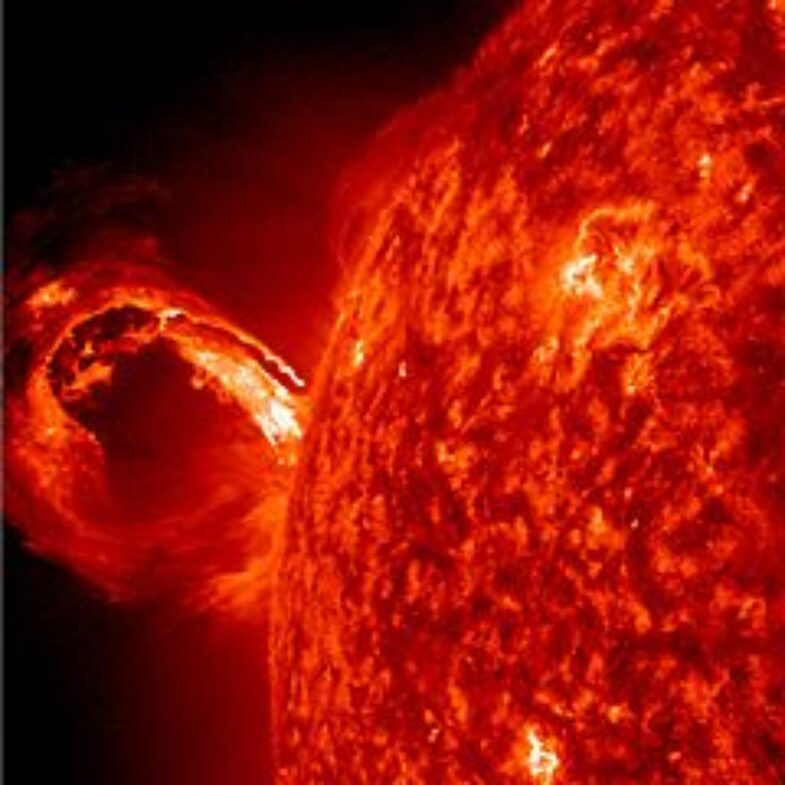
Haystack joins MIT-led team to forecast space weather
Space weather phenomena such as coronal mass ejections, geomagnetic storms, and solar flares can wreak havoc on Earth’s atmosphere, damaging or shutting down our telecommunication and navigation systems in space and on the ground. These geospace events are difficult to predict; improving the forecasting of potentially devastating space weather is in the nation’s best interests. A geomagnetic storm in the nineteenth century known as the Carrington Event fried communications systems across North America, literally shocking telegraph operators.
An MIT-led team of geospace scientists has been awarded a National Science Foundation (NSF) grant to create a customizable, expandable software framework to analyze decades worth of extensive atmospheric observations stored in Haystack’s Madrigal database. The NSF Space Weather with Quantified Uncertainties (SWQU) program will fund a team of researchers led by Richard Linares of the MIT Department of Aeronautics and Astronautics (AeroAstro). The group includes MIT scientists from MIT Haystack Observatory, AeroAstro, and the Department of Mathematics, as well as the University of Michigan and the University of California at San Diego.
Madrigal, Haystack’s extensive atmospheric database, will provide data for this next generation of space weather modeling.
“MIT Haystack research programs include a focus on conditions in near-Earth space, and our NSF-sponsored Madrigal online distributed database provides the largest single repository of ground-based community data on space weather and its effects in the atmosphere using worldwide scientific observations. This extensive data includes ionospheric remote sensing information on total electron content (TEC), spanning the globe on a nearly continuous basis and calculated from networks of thousands of individual global navigation satellite system community receivers,” says Haystack’s Philip Erickson, assistant director and lead of the geospace group. “TEC data, when analyzed jointly with results of next-generation atmosphere and magnetosphere modeling systems, provides a key future innovation that will significantly improve human understanding of critically important space weather effects.”
For more information, see MIT News, MIT-led team to develop software to help forecast space storms.